Frame Drum Basics (upright)
Watch the beginning chapter from instructional DVD “Worldpercussion 1 – Frame Drums”
This is a type of framedrum that has many names and you find it in a lot of different countries and music-cultures. It is basically a simple frame with a skin and sometimes a thumbhole or space for the thumb. It is part of the middle-eastern percussion section, and also used a lot in spiritual music around the world.
Position
Most tars have a thumbhole or a space for the left thumb. Form a “U” with your left hand, and put the thumb through the hole. With the tip of your right hand thumb you stabilize the drum from the side ca 90 degrees from your left hand. It is important not to grab the drum with your left hand. The drum has to be free to move a little while playing. It just needs some time to find the balance.
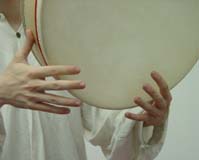
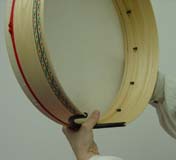
Doum
For the bass stroke use the right ringfinger. You reach towards the center of the drum, hit the skin and let your finger bounce off immediately. All the strokes with the right hand are done with a movement also from the wrist, not only the finger.
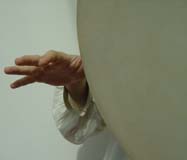
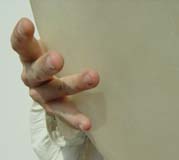
Tak
The rimstroke is done with the right and left ringfingers on the edge of the rim. Try not to dampen the skin and to make the sound as open as possible

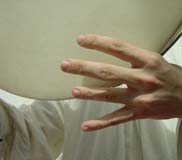
PA
For this stroke your hand should be slightly cupped. Then you hit the drum as much towards the center as possible and keep the hand on the skin for a moment to dampen the sound.
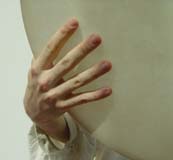
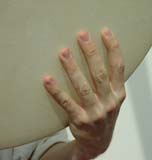
Tar-notations
Below you see the accents of the middle eastern rhythm malfuf.

![]()
Now some additional strokes are added.

![]()
In the next pattern all the spaces are filled up. These strokes should be played softly and the accents stand out clearly. You can also play hand to hand (rlrlrlrl). For practice it´s good to play it both ways.

![]()
Here the accent taks are exchanged for slaps. Also this one can be played hand to hand, but then one of the slaps comes to the left hand which is more difficult to play.

![]()
The next rhythm is a 6/8 from Morroco. The nice thing about this groove is that the first half feels ¾ and the second 6/8. Here the basic version:

![]()
Now you can add some extra notes

![]()
You can also play slaps instead of taks:

![]()

![]()
Ok, now some odd-meter grooves, first in 5/8, then in 7/8. Both grooves are first notated “empty”, just the dominant strokes and later the spaces are filled up. Keep in mind that the accents should be always stand out so the structure of the groove stays clear.

![]()

![]()

![]()

![]()
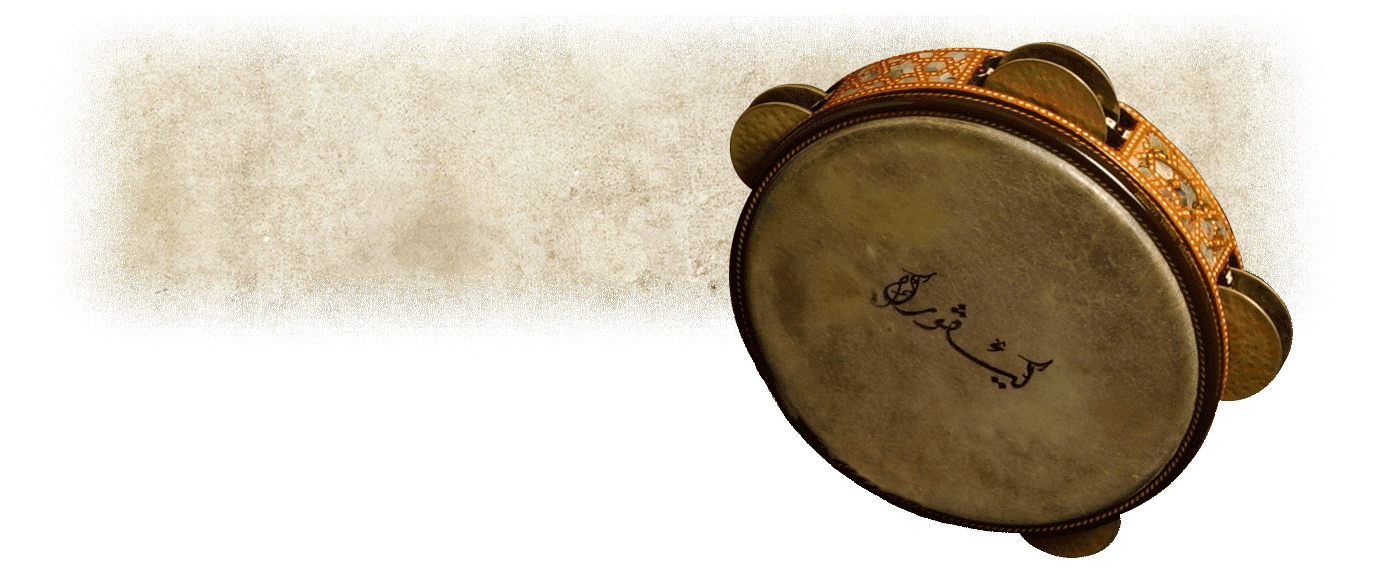


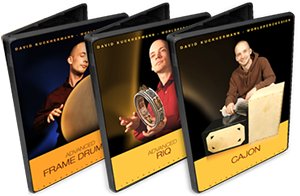
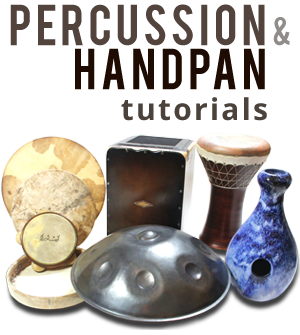
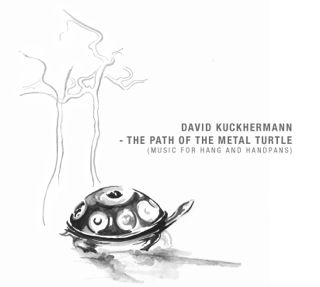
Pingback: Top 10 Yoga Music CDs of All time :The Longtail Music Catalog